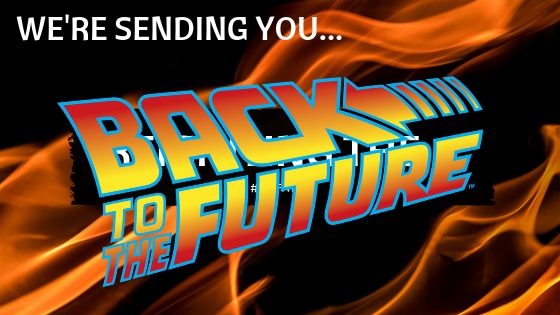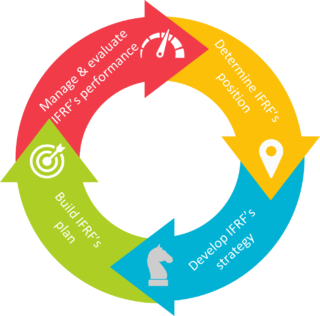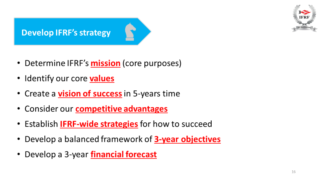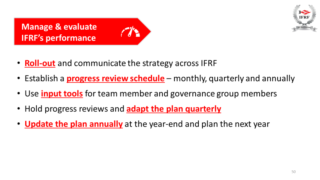-
‘Back to the Future’
Date posted:
-
-
-
Post Author
Philip SharmanIFRF Director
-

-
[Editor’s note: To help us separate the ‘movie buffs’ (with our very own Lucy McFly an extreme example of this curious breed) from the ‘research boffs’ (an equally challenging species who count me among their ranks), why not scour this blogpost for references (sometimes cunningly concealed) to the classic 1985 film that shares its name with the title? Let Lucy know how many you find and she’ll confirm – as a totally unbiased, incorruptible adjudicator – how well you did! First prize* is a trip in a converted DeLorean DMC-12 car back to either (i) a US dance hall in 1955 or (ii) a Hoogovens furnace in 1949, including a complimentary ride on a Batavus ‘Old Dutch’ bicycle… *Liable to cancellation]
It was over three years ago now – approximately 21st October 2015 – that I joined forces with a small team from the University of Sheffield (‘Doc’ Mohamed Pourkashanian and Matthew ‘Marty’ Billson) to express an interest in Sheffield ‘hosting’ IFRF when it moved from Livorno in Italy, its home for almost a decade. One of the central elements in our proposal was that, after transitioning and re-establishing IFRF at its brand new UK base, we would carry out a full Strategic Review at the end of 2018 and, alongside it, develop a new Three-Year Plan for the organisation.
So why did we think this was needed?
The term ‘strategic review’ is often used by all kinds of organisations to describe all sorts of activities – not all of them strictly ‘strategic’ and many less than bullet-proof. So it’s worth spending just a moment to underline precisely what my colleagues from Sheffield and I envisioned.
A strategic review can perhaps best be defined as a structured process that has the top-level aim of enabling an organisation to pinpoint new value-creating opportunities. In a commercial context, the focus might be on improving performance, for example, or adapting to a period of upheaval and change, and a review of this type is often performed within the umbrella of an overall strategic planning/management process.
Our thinking back in 2015 was very much in step with this. IFRF was facing considerable changes – in location, management and modus operandi. Moreover, it found itself operating in a rapidly changing industrial and, indeed, global and political context, with respect to both combustion and energy more broadly. It was also clear that exciting new opportunities were emerging, not only in new technical fields but also in new (from an IFRF perspective) geographical regions.
![]()
With my own background being in industry, the idea of a strategic review wasn’t such a lightning bolt. Indeed, I was accustomed to the strategic review/planning approach and very familiar with the benefits this could deliver in terms of assessing a current position and mapping out a clear and effective future pathway.
In this instance, we decided that it would johnny be goode to apply a four-stage strategic review model that answered four key questions:
Stage 1: “Where are we now?” – review and pinpoint IFRF’s position at the end of 2018.
Stage 2: “Where do we want to be?” – decide where IFRF wants to get to, by when, and devise and refine an appropriate strategy.
Stage 3: “How exactly will we get there and who will do what?” – construct a clear and detailed plan of action to shape IFRF’s suite of activities moving forward.
Stage 4: “How are we doing?” – identify criteria and mechanisms enabling IFRF to manage and evaluate its performance.
This comprehensive process has now been completed, working in close conjunction with IFRF Council. The results it has generated were considered by Council last week and the net outcome was a firm and robust foundation for the development of an agreed Three-Year Plan – a Plan that can drive IFRF into its eighth decade with confidence and energy as an organisation which is forward-looking, fresh-thinking, agile, flexible and smart. Yes, this is a Plan squarely focused on enabling future success.
So let’s unpack each stage of the Strategic Review in just a little more detail, in terms of its scope and how it contributes to the overall outcome that the review was carefully designed to produce:
Stage 1: “Where are we now?”
![]()
A ‘situational analysis’ was conducted that included the results of the Member Survey undertaken in recent weeks. This analysis provided the platform for a classical ‘SWOT’ exercise exploring IFRF’s internal Strengths and Weaknesses, and also external Opportunities and Threats. The implications were then considered, feeding through into Stages 2 and 3 of the Strategic Review process.
Stage 2: “Where do we want to be?”
![]()
Using the outputs from Stage 1 and in discussion with Council, IFRF’s ‘mission’, ‘values’ and ‘vision’ were revisited and updated for the coming five-year period. Following this, an analysis of IFRF’s ‘competitive advantages’ looked at eight international research-focused organisations similar to IFRF and compared aspects such as frequency of communication with members, social media presence, membership benefits and membership fees. This range of items fed forward into a set of IFRF-wide strategies designed to lead to realisation of our five-year vision of success. A balanced framework of three-year objectives was then developed with Council, enabling a broad financial forecast to be developed out to the end of 2021. Together, these elements of IFRF’s future strategy formed the foundations for the Three-Year Plan developed in Stage 3.
Stage 3: “How exactly will we get there and who will do what?”
![]()
The most extensive of the four stages, this included consideration of every aspect of IFRF in the light of all that had emerged from Stages 1 and 2, plus development of a Three-Year Plan covering the period 2019-21. A number of IFRF priorities were established, with 42 short-to-mid-term goals set in discussion with Council and 13 key performance indicators (KPIs) selected covering every corporate, strategic and operational aspect of IFRF. IFRF Council largely agreed with what was proposed, but suggested a few refinements. The Three-Year Plan – particularly the 2019 Plan – as well as the cascading of the agreed goals down to team members and the development of a detailed budget for 2019 will now be finalised ready for implementation from 1st January.
Without doubt, the outputs from Stages 1, 2 and 3 of the process contain a great deal that is interesting, informative and enlightening. So we plan to publish many of them over the next few weeks, as well as highlighting and expanding on specific aspects through forthcoming Monday Night Mail blogposts. But, especially with Christmas and the season of goodwill almost upon us here in the UK, the power of love is strong and I’m sure you would welcome a Yuletide taster of just what the Three-Year Plan contains. IFRF will:
- focus on growing our membership, particularly in Asia, while also maintaining and growing our membership through our existing eight National Flame Research Committees (NFRCs)
- develop research activities in 2019 (through ‘mini-projects’ with universities and collaborative R&D with partners) and widen our network of Preferred Research Partners globally
- work with our main preferred research partner PACT to establish ‘PACT2’ in 2020/21 (and with IFRF embedded) – this will include new pilot-scale research rigs (kW to MW – but not as much as 1.21GW), capable of handling a broad range of existing and new fuels (biomass, coal, plutonium, various gaseous fuels)
- re-establish IFRF training activities, involving both ‘real’ and web-based offerings
- maintain our pattern of events, including an IFRF Conference in 2021, TOTeMs (topic-oriented technical meetings, in association with our NFRCs) held at least annually, and national/regional Flame Days or Symposia (including events in ‘new’ countries/regions)
- establish at least two Specialised Networking Groups addressing particular technical or sectoral interests, and enable web-based meetings held approximately every six months
- further develop our digital delivery via our new website, including working with our NFRCs to better link their web ‘presence’ and activities to those of IFRF
- maintain our bi-monthly Monday Night Mail e-newsletter, keeping it fresh in terms of content and the balance between IFRF news, industry news and ‘thought-pieces’
- further develop our social media platforms (particularly in terms of improving our LinkedIn page and group, and ramping-up our WeChat profile as we engage more in China)
- review and further develop our Industrial Combustion online journal
- overhaul and update our online Combustion Handbook and link this to our events programme
- strengthen and refresh Council with new officers, NFRC members and co-opted specialists, while developing greater gender and age diversity.
Roll-out of our new Strategy and Three-Year Plan to our membership will take place progressively during the next month – starting with this blogpost.
Stage 4: “How are we doing?”
![]()
From the moment IFRF relocated to the clocktower in Sheffield in January 2017, we have implemented a detailed system of governance and reporting/evaluating performance on a monthly, quarterly and annual basis. Now well-established, these systems and procedures enable us to adapt and update our plans quarterly and annually, with the appropriate level of governance exercised.
* * * * * *
I think I can say with total conviction that IFRF’s leadership team (in other words, IFRF Council and the delivery team in Sheffield) are confident that, together, the new Strategy and the Three-Year Plan for 2019-21, summarised above, put us in a powerful position to achieve growth and increase our impact over the next few years. We firmly believe that they will make IFRF truly ‘fit for purpose’ as it embarks on its eighth decade of service to industrial combustion sectors worldwide.
And that’s it! I really hope you have enjoyed our whistle-stop journeys into the past, and also this latest expedition into an exciting future – perhaps Spielberg may turn it into a movie one day… But now it’s high time we got on our hoverboards and headed back to the present – leaving burning wheel tracks behind – as we prepare to embrace a new, busy, rewarding and enjoyable year ahead! I’m more convinced than ever that, together, we can keep soaring upwards and ensure that IFRF attains greater heights than ever. Where we’re going, we don’t need roads…





